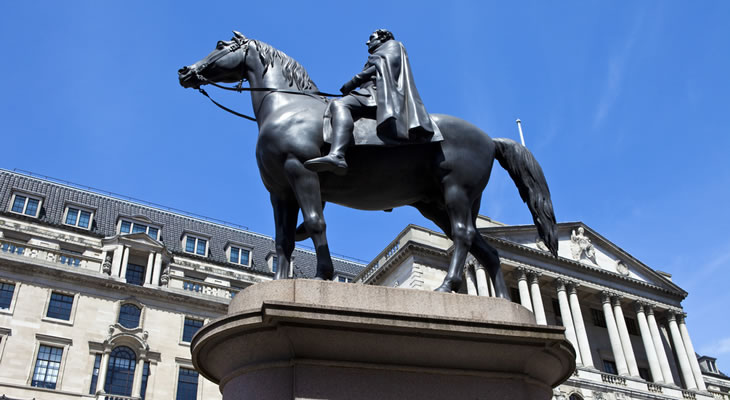Tuesday saw the GBP/USD exchange rate briefly climb after the UK’s inflation report showed a stronger increase in consumer price pressures than expected. However, the Pound’s gains were short-lived as investors began to double-guess the likelihood of any reactive action from the Bank of England (BoE).
The Pound to US Dollar exchange rate briefly jumped to a high of 1.2943 following the inflation news but dropped back to near the day’s opening levels at around 1.2900 as investors digested the report.
Investors have been hoping for some time now that the Pound’s drop in value will cause inflation strong enough to pressure the Bank of England (BoE) into tightening UK interest rates.
However, the bank has consistently indicated that it will keep UK monetary policy at its loosest levels on record even if inflation rises.
Essentially, markets continue to hope that stronger inflation will put pressure on the BoE and the BoE continues to argue they will not be budged so long as other factors and uncertainties remain.
These uncertainties include UK-EU Brexit negotiations, the job market, and slowing wage growth which could put a squeeze on consumers and make it difficult for them to live comfortably.
Even if it seems unlikely that markets will give up entirely on BoE tightening hopes any time soon, stronger-than-expected UK inflation results seem to have smaller and smaller bullish effects on the Pound with every instalment.
Britain’s Consumer Price Index (CPI) rose from 2.3% to 2.7% year-on-year in the April report, while monthly inflation rose 0.5%.
However, despite the better-than-expected inflation stats, Sterling’s gains were brief and limited. This could indicate that investors are finally beginning to give up on BoE tightening bets.
It could also be due to the recency of last week’s BoE meeting, at which policymakers asserted that rates would be left frozen even if UK inflation neared 3%.
As a result, if inflation happens to rise above 3% in the coming months, investors may begin to bet on BoE interest rate hikes once more.
This leaves the Bank of England itself as one of the main significant limitations to the Pound’s strength going forward.
It may have fared even worse against the US Dollar on Tuesday if not for USD weakness.
Monday’s US manufacturing data from Empire unexpectedly contracted -1 despite being predicted to improve to 7.
Geopolitical anxiety has also been rising again, due to tensions between the US and North Korea as well as reports that US President Trump had leaked classified information to Russian officials. This has limited USD strength.
Wednesday’s UK data will be the next cause of movement for the Pound. Employment data from March and jobless claims stats from April will be published.
Investors will be keeping an eye on the wage stats, especially with inflation rising so rapidly. Thursday’s April retail sales stats also have the potential to influence Pound exchange rate movement.
At the time of writing this article, the Pound US Dollar exchange rate trended in the region of 1.2890. The US Dollar to Pound exchange rate traded at around 0.7760.


Comments are closed.